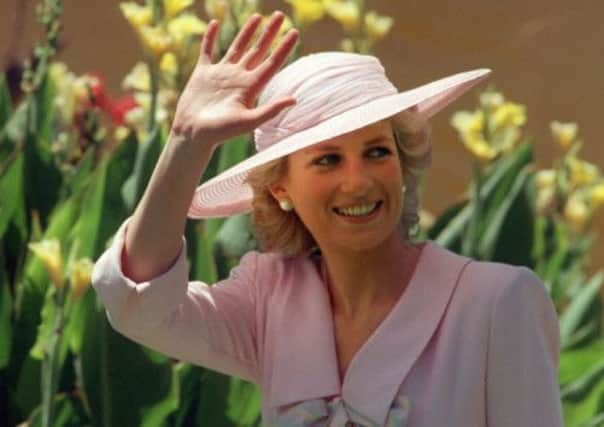Emma Cowing: Diana’s death still painful for many


The two had gone on “an emotional visit” to Althorp, where Diana is buried on an island in the middle of a lake. They had apparently held hands as they walked through the grounds, before William rowed them out to the island itself. Clarence House refused to comment on the reports, saying that visits to their mother’s grave were the most “private aspects” of the princes’ lives. “This means,” continued Clarence House, “that from time to time stories will run that may or may not be true.”
I thought of that story the other day when I read that Scotland Yard had been handed new information over the death of Diana, Princess of Wales, by military sources, and was now assessing its credibility. Because if ever there was a tale in recent history where “from time to time stories will run that may or may not be true”, it is this one.
Advertisement
Hide AdAdvertisement
Hide AdIt is almost 16 years since Diana was killed in a tunnel in Paris in a black Mercedes alongside her boyfriend Dodi Fayed, and the Ritz’s head of security, Henri Paul. A bodyguard, Trevor Rees-Jones, survived the crash with multiple injuries.
Ever since that night, conspiracy theories have swirled as to how the world’s most photographed woman, and one of the world’s richest men, could have died in such a manner. The internet hums with them, entire forums devoted to discussing the minutiae of the accident, while YouTube is clogged with long and verbose documentaries pouring over every detail.
Some believe the princess was murdered because she was pregnant by Fayed, and that the Royal Family could not stomach the thought of a Muslim half-sibling to the future king. This despite the fact that the autopsy showed she was not pregnant, and one of her closest friends, Rosa Monckton, confirmed the princess was menstruating just ten days before her death.
Then there are the questions: why did the ambulance take almost two hours to get to hospital? (Because she had delicate injuries that could have been exacerbated by her being moved, suffered several cardiac arrests while still in the wreckage, and was then treated in the ambulance, which in France, is equipped as well as an ICU unit). Did the mysterious white Fiat Uno that scraped against the Mercedes just moments before the crash belong to a paparazzi photographer who took his own life in mysterious circumstances two years later? (No, he did own a Fiat Uno but it was up on blocks with no wheels, hundreds of miles away from Paris at the time of the accident).
These are just a flavour of the many bizarre questions still being asked today. The answers however, seem to do little to mollify the conspiracists, chief among them of course, Mohammed al-Fayed, whose car the four were travelling in, and whose driver was over the drink drive limit. That, unfortunately, is a fact, as is that the car was being driven at an estimated 65mph, an extraordinary speed in an urban tunnel at any time of day or night.
In 2007, a 90-day inquest led by Lord Justice Scott Baker was held at the Royal Court of Justice. The jury concluded its verdict as “unlawful killing, grossly negligent driving of the following vehicles and of the Mercedes”. The Met, meanwhile, spent £8 million on a two-year investigation of the crash, Operation Paget.
And yet the conspiracies continue and when any new piece of information is revealed, a whole new round of who, where and why is unearthed once again. Why?
Why can people not accept the reality of the situation and move on? It is not as though we have not already spent an obscene amount of money investigating what happened.
Advertisement
Hide AdAdvertisement
Hide AdPerhaps, though, to answer that question we must return to the poignant image of William, taking his bride-to-be to visit the grave of his mother, lying alone on her peaceful island while the world gathered in London to watch her son at the altar, her old rival Camilla in a front-row pew.
Because when you strip away all the hoopla and the hype, what happened that night in 1997 in Paris was intensely sad: a young mother, killed senselessly in a car crash by a drunk driver, at the age of 36. And for some people, that is just too simple, and too banal, to bear.